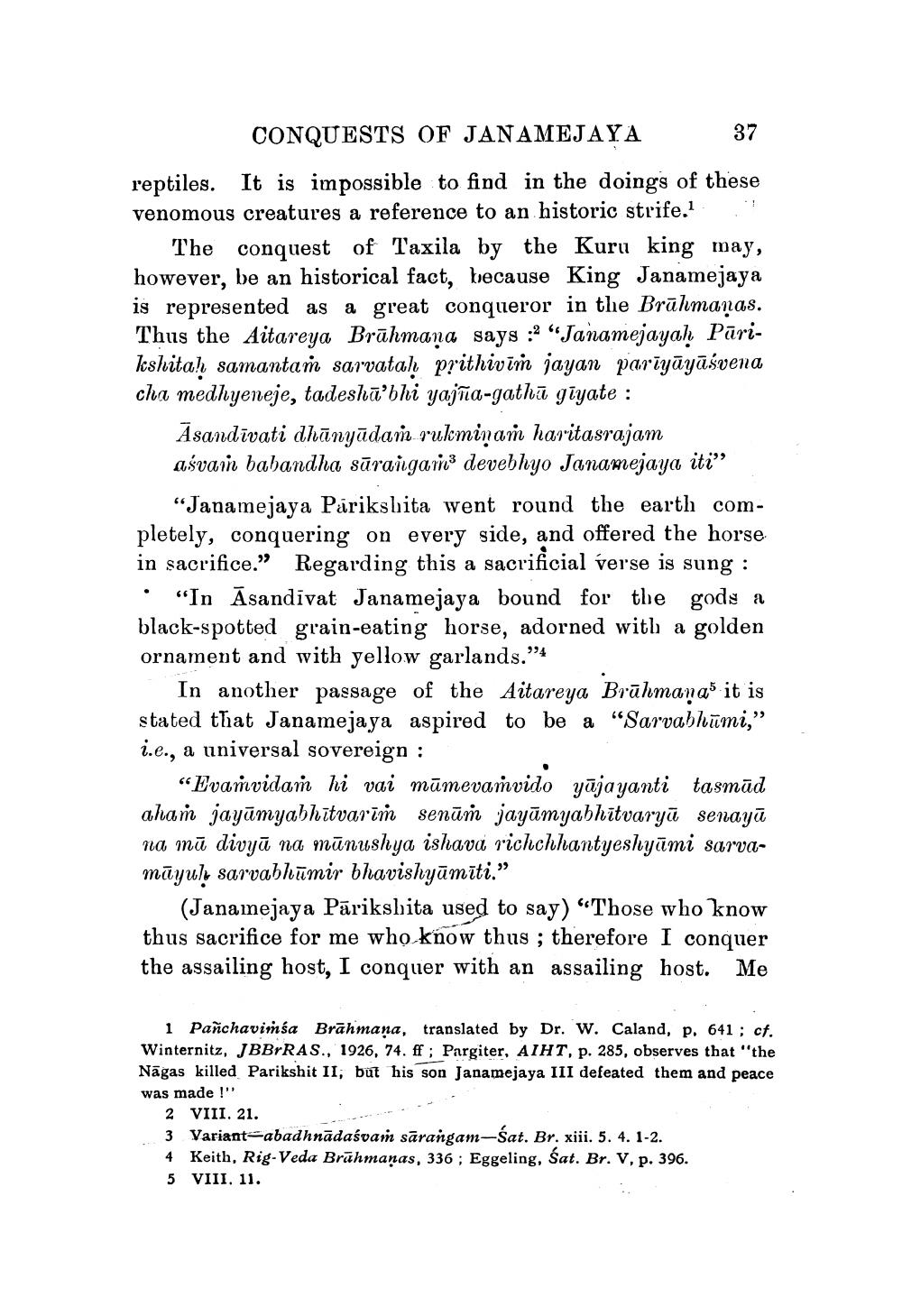________________
CONQUESTS OF JANAMEJAYA
37
reptiles. It is impossible to find in the doings of these venomous creatures a reference to an historic strife.1
The conquest of Taxila by the Kuru king may, however, be an historical fact, because King Janamejaya is represented as a great conqueror in the Brahmanas. Thus the Aitareya Brahmana says: "Janamejayah Purikshitaḥ samantam sarvataḥ prithivīm jayan pariyāyāśvena cha medhyeneje, tadesha'bhi yajña-gathā gīyate :
Asandivati dhanyūdam rukminam haritasrajam asvam babandha sarangam3 devebhyo Janamejaya iti"
"Janamejaya Parikshita went round the earth completely, conquering on every side, and offered the horse in sacrifice." Regarding this a sacrificial verse is sung:
"In Asandivat Janamejaya bound for the gods a black-spotted grain-eating horse, adorned with a golden ornament and with yellow garlands."
In another passage of the Aitareya Brāhmaṇas it is stated that Janamejaya aspired to be a "Sarvabhūmi,” i.e., a universal sovereign :
"Evamvidam hi vai mumevamvido yajayanti tasmād aham jayamyabhītvarim senām jayamyabhītvaryā senayā na mā divya na mūnushya ishava richchhantyeshyāmi sarvamayuḥ sarvabhumir bhavishyāmīti.”
(Janamejaya Parikshita used to say) "Those who know thus sacrifice for me who know thus ; therefore I conquer the assailing host, I conquer with an assailing host. Me
1 Panchavimśa Brahmana, translated by Dr. W. Caland, p. 641; cf. Winternitz, JBBrRAS., 1926, 74. ff; Pargiter, AIHT, p. 285, observes that "the Nagas killed Parikshit II, but his son Janamejaya III defeated them and peace was made !"
2 VIII. 21.
3 Variant-abadhnādaśvaṁ sārangam-Śat. Br. xiii. 5. 4. 1-2.
4 Keith, Rig-Veda Brahmanas, 336; Eggeling, Śat. Br. V, p. 396.
5 VIII. 11.




